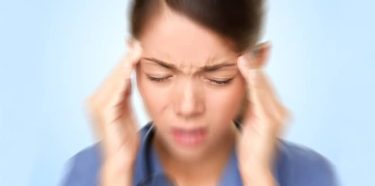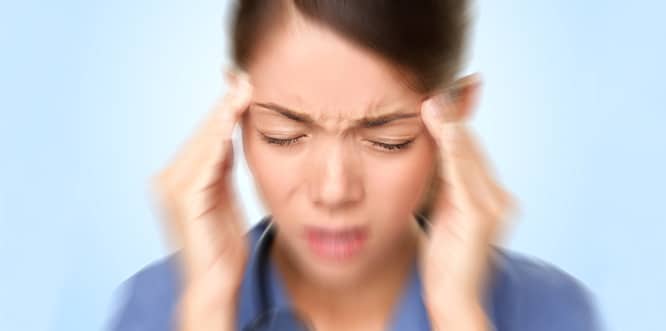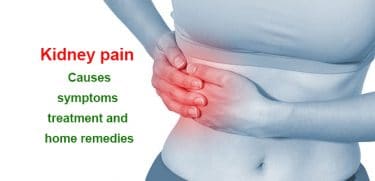Neuralgia is a severe pain that occurs in various parts of the body and affects one’s life negatively. It cannot be fully described by the patients as it is very different from a normal pain. Electrical shock, stinging, knife stabbing, burning, numbness are the expressions commonly used to help patients to describe it. As many diseases can cause neuralgia, the cause of pain may not be detected in most patients. To relieve the pain, more serious drugs, antidepressants or surgical methods are necessary rather than conventional painkillers.
Table of Contents
What is neuralgia?
Neuralgia literally means nerve pain. Pain appearing in the sensory field of a nerve is called neuralgia. The description of the pain is very difficult. Each patient may have a different description. It is usually a sudden, burning pain, such as a sensation of electric shock or knife stabbing, of short duration.
At first, it occurs several times a day, but its frequency may increase later on. It is more common in women than men. The incidence increases with age.
Causes of neuralgia
In order for a normal pain to occur, pain sensing sensory neurons have to be stimulated, and this stimulation has to be transferred to the brain through the nerve fibers. However, pain in neuralgia is independent of these sensors.
Pain occurs due to a disorder in the structure and function of the nerve fibers, which are involved in sensory transmission. There are many diseases that can cause neuralgia.
Diseases causing neuralgia
- Diabetes
- Chronic renal failure
- Chemical agents
- Infection diseases like chickenpox, syphilis, AIDS
- Some cancer medications
- Multiple Sclerosis (MS)
- Tumor, vascular disorders, bone and soft tissue disorders due to compression of nerves
- Trauma

Neuralgia types
Trigeminal neuralgia
The most common type of neuralgia is trigeminal neuralgia. It is characterized by intense bolts of pain caused by the trigeminal nerve, which conducts the sensation of the face. The pain can last from a few seconds to a few minutes. It is also known as “suicide disease” due to the intensity of the pain. It appears more often on one side of the face, on the teeth and jaw.
It may occur several times a day, or it may occur several times a month. It can be triggered in some situations such as cold weather, face washing, eating, tooth brushing. There usually is a relief period between the pain episodes.
It may cause unnecessary treatment of healthy teeth due to its high incidence of tooth pain. It is more common in MS patients. Traffic accidents may cause vascular distortions and cysts compressing the trigeminal nerve. There are also patients who have trigeminal neuralgia pain after tongue piercing. The cause of the disease cannot be identified in the majority of patients.
Atypical trigeminal neuralgia
The majority of these patients had migraine headaches previously. Unlike trigeminal neuralgia, it also causes pain in the scalp and neck. It is longer and more severe than trigeminal neuralgia. A cause of pain is likely to be detected, such as tumor or vascular disorders.
Postherpetic neuralgia
In people who undergo chickenpox, sudden severe stinging pain occurs in the affected areas as well as itching. It is more common in elderly patients who just underwent varicella due to a decreased immunity.
Occipital neuralgia
The occipital region is the back of the head. The pain is caused by the nerves that transmit the sensation of this region. It can be confused with migraine pain. It can be triggered by a variety of reasons such as touching, hair combing, neck movements.
Glossopharyngeal neuralgia
It is usually characterized by unilateral outbreaks of severe pain in the tonsils, tongue root and ear region. It can be triggered by chewing, swallowing, stretching. Because neuralgia can be seen in various parts of the body, there are many types of neuralgia depending on where it is seen. These are:
- Intercostal neuralgia
- Superior laryngeal nerve neuralgia
- Sphenopalatine neuralgia
- Atypical facial neuralgia
Symptoms of neuralgia
- Localized pain in a specific area
- Short-time, severe, caustic, electric shock, or stabbing like pain.
- Pain can be triggered by touching or pressure.
- Muscle spasm may occur in the pain area.
- There is no loss of function in the pain area but movements can be limited due to pain.
- Pain can be repeated hundreds of times during the day or sometimes several times a month.
- Pain may appear with triggering factors such as touching, tooth brushing, eating, coughing, or wind.

Diagnosis of neuralgia
- Story and examination: The characterization of the pain symptoms is the most important element that can help the diagnosis. If neuralgia is suspected after hearing the detailed history of the patient, one should try to determine the conditions that may cause pain with further examination. Detailed dental examination in trigeminal neuralgia and detailed neck and throat examination in glossopharyngeal neuralgia are required. Rashes may be seen in postherpetic neuralgia.
- Blood tests: They are routinely asked for screening for diabetes and infection.
- Imaging tests: Imaging methods such as X-ray, Tomography and MRI may be asked to detect conditions such as tumor, vascular anomalies, bone and soft tissue pathologies that may cause neuralgia.
Which doctor takes care of neuralgia?
Neurology is the main department involved in the diagnosis of the disease. Patients should be evaluated by dentists and otolaryngologists to exclude different diseases that may cause pain in trigeminal neuralgia and glossopharyngeal neuralgia.
At the treatment stage, the neurologist evaluates the patient and starts the treatment. Despite the medications, if complaints do not stop, it may be necessary to consult the Algology department. In this department, the neurologist or anesthesiologist specialized in pain continues the treatment. It is tried to reduce the pain by injection.
In spite of persistent pain, Brain and Nerve Surgeon should be consulted. Relevant referrals will be done by a neurologist.
Treatment of neuralgia
Neuralgia medications
Conventional painkillers such as paracetamol usually does not provide relief. Certain medications used for different diseases reduces such pain. These drugs are started at a low dose, the active dose is gradually increased. It must be used continuously for 6 months. Medications should be used not only during pain but regularly.
- Antidepressants: Amylptilin (Laroxyl), Duloxetine (Cymbalta), Venlafaxine (Efexor) can be used to relieve pain. Such medications may have side effects such as exhaustion, fatigue, dizziness, dry mouth.
- Anticonvulsant drugs: Drugs used for epilepsy. Carbamazepine (Tegretol), Phenytoin, Oxcarbazepine, Gabapentin, Pregabalin, Valproic acid are the most common ones.
Carbamezapine (Tegretol) is one of the most used drugs. It is started at a dosage of 100-200 mg/day. If no side effects are seen, it can be increased all the way to 1200 mg per day. Side effects such as fatigue, dizziness, difficulty in concentration, drowsiness, skin rashes may occur. Other anticonvulsant drugs may have similar side effects.
Patients who are long-term users of carbamazepine should have a liver and blood test done every 6 months.
- Antispasmotic drugs: Baclofen (Liorocele) causing muscle relaxing activity may be included in this group. When this drug is used with Carbamezapine, its efficacy increases.
- Local creams: Lidocaine (Emla) and Kapsain containing creams. It is useful to apply them to the pain area 3-4 times a day.
- Nerve blockage: Pain can be reduced with anesthetic and steroid injections in the area of the nerve that causes pain, thereby causing nerve blockage. Depending on the type of neuralgia, the blockage zone changes. In occipital neuralgia, the injection is performed behind the head and in postherpetic neuralgia, between the vertebrae.
- Percutaneous interventions: This is a method of reducing pain with applications such as alcohol, glycerol and radiofrequency in the trigeminal nerve inserted with a needle through the cheeks. This method reduces the pain by damaging the nerve. Loss of feeling in the face may occur after the procedure.
Trigeminal neuralgia surgery
Surgical methods for ongoing pain may be carried out if the drug treatment is not successful, mostly in the treatment of trigeminal neuralgia. The method known as microvascular decompression therapy was first tried in the 1960s.
It is a surgical method that aims to reduce the pressure by placing a soft sponge-like substance between the nerve and the vein that is pressing the trigeminal nerve by opening a hole about 2 cm behind the ear. You will be required to stay in the hospital for approximately 3 and 5 days after the operation. Hearing loss and facial paralysis has been known to occur in rare cases.
Other treatment methods
- Gama Knife: it is a method that relieves pain by targeting beams of radiation to the trigeminal nerve. It is an alternative method for patients who are not suitable for surgery or who do not accept surgery. It is applied in one day and a single session. It has an effect by reducing the sensitivity of the nerve without causing significant damage in the nerve. Studies show that it is beneficial in the majority of patients in the first month. If the method is performed appropriately, little damage happens to the surrounding tissue.
- Vitamin B12 and magnesium support: they help to alleviate pain.
- Botox Treatment: Botox injection, applied to the pain area especially in trigeminal neuralgia, provides relief.
- There is insufficient scientific evidence for methods such as acupuncture, yoga and aromatherapy. However, patients report that these methods reduce the pain.
Neuralgia herbal treatment
There is no scientifically proven herbal treatment that helps eliminate the pain of neuralgia.
What happens if neuralgia is not treated?
Many people experience pains in the neuralgia attacks, which can recur several times in their lives. Sometimes pain can pass by itself. However, frequent episodes of severe pain affect life negatively. Pain disrupts the quality of life, decreases functionality, and causes anxiety and psychiatric problems such as depression.
In some patients, the tendency to suicide may increase due to the severity of pain. If the disease is not properly diagnosed and treated, their quality of life can be very negatively affected due to the severity of the pain.
What is good for neuralgia pain?
As there are no treatments that directly eliminate neuralgia pain, as in migraine attacks, medication should be taken regularly and level of drug in blood should be maintained to a certain level. Persons suffering from neuralgia should begin to use medications before frequency and severity of pain increase.
Hot compress applied to pain area can sometimes work during the pain episode. Some patients also reported that they felt some relief after the application of cold compresses.
It should be noted, however, that both hot and cold compresses application can exacerbate the pain. Creams containing lidocaine or capsein can be applied to the pain area. Local anesthetic drugs or intravenous medications in severe pain episodes can provide partial relief.
Neuralgia during pregnancy
The treatment of neuralgias during pregnancy is more difficult. Drugs used in the treatment of neuralgia have significant side effects to the baby. Locally effective creams and local injections for nerve blockages can reduce pain in pregnancy. It is also safer because there are no obvious side effects on the baby. Relaxation therapies such as acupuncture, vitamin support and yoga may also be useful.
Suggestions and warnings for neuralgia patients
- Get to know your pain and stay away from triggering factors.
- Note that normal painkillers do not help much.
- Continue to take your treatment on a regular basis, not only during pain attacks.
- If you should use carbamazepine for a long time, do not neglect your regular check-ups.
- If you experience side effects associated with medication, contact your doctor for alternative treatments.
- Contact your doctor for local injection or surgical treatment for ongoing pain in spite of drug treatments.





i have some pain when i touch my head or hair on right side and like pins and needles on face